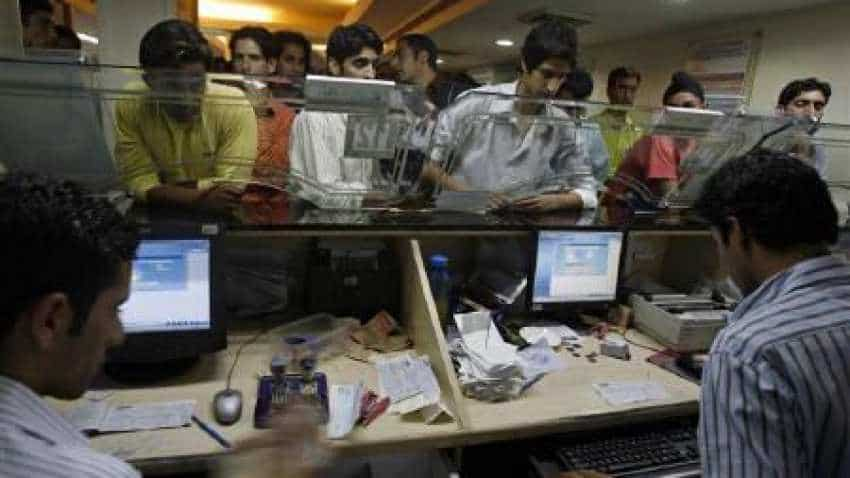Banking sector outlook to stay negative till capital positions
The outlook for the country's banking sector is likely to remain negative until its capital position strengthens in proportion to the bad loans and weak financial performances, according to Fitch Ratings.

The outlook for the country's banking sector is likely to remain negative until its capital position strengthens in proportion to the bad loans and weak financial performances, according to Fitch Ratings.
The rating agency said the USD 151-billion stock of bad loans remains a risk for the sector's weak income base, which is vulnerable to ageing provisions and slower non-performing loans (NPLs) resolution. "Outlook on the Indian banking sector is likely to remain negative until the banks address their weak core capital positions against mounting bad debt and poor financial performance," it said in a report today.
The capital position of state-run banks banks is most at risk, with the core capital ratios of 11 of the 21 public sector banks (PSBs) below the 8 per cent common equity tier 1 (CET1) regulatory minimum that will come into place at the end of FY19, according to the report. The rating agency believes the country's banks will need USD 40-55 billion in additional capital to meet the Basel-III requirements by 2019.
Of this, the state-run banks will require the bulk of the amount and most of the capital is likely to be used for meeting minimum capital requirements and absorbing non-performing loans provisions, around three quarters of which are in the form of CET1, the report said.
Fitch Ratings said the government is likely to be forced into providing most of the required capital, since capital raising remain challenging due to state-owned banks' weak equity valuations.
Last October, the government had announced Rs 2.11 lakh crore capital infusion programme for the state-run banks, spread over two fiscals years - 2017-18 and 2018-19. As per the plan, the PSBs were to get Rs 1.35 lakh crore through re-capitalisation bonds, and the balance Rs 58,000 crore through raising of capital from the market.
Out of the Rs 1.35 lakh crore, the government has already infused about Rs 71,000 crore through recap bonds in the banks and balance would be done during FY19. The report further said that banks' credit costs rose sharply following regulatory changes aimed at accelerating bad-loan recognition.
WATCH ZEE BUSINESS VIDEO HERE
It resulted in losses that cumulatively eroded nearly all of the USD 13 billion in government capital injected in FY18, adding to capital positions which were already weak, the report said. In FY18, loan growth improved to 10.4 per cent, from 4.4 per cent in FY17.
"This improvement was shouldered by a few large banks, and sustaining the growth momentum will be difficult without adequate capital replenishment," the report said.
The financial of large private-sector banks weakened further in FY18, but are better than those of their state-owned counterparts, 11 of which are under the central bank's prompt corrective framework, it added.
The report believes the sector's legacy problems have been largely recognised, but the system NPL ratio could witness more upside due to residual stress and new risks emerging out of the retail and SME sectors.
Get Latest Business News, Stock Market Updates and Videos; Check your tax outgo through Income Tax Calculator and save money through our Personal Finance coverage. Check Business Breaking News Live on Zee Business Twitter and Facebook. Subscribe on YouTube.
RECOMMENDED STORIES

Top 7 Flexi Cap Mutual Funds With up to 52% SIP Return in 1 Year: Rs 20,000 monthly SIP investment in No. 1 fund has generated Rs 3.02 lakh; know about others too

Sukanya Samriddhi Yojana vs PPF: Rs 1 lakh/year investment for 15 years; which can create larger corpus on maturity?

Latest FD Rates: Know what SBI, PNB, Canara Bank, HDFC Bank, ICICI Bank are providing on 1-year, 3-year and 5-year fixed deposits
02:18 PM IST








 Finance Ministry considering proposal to increase Chief General Managers posts in PSU banks: Report
Finance Ministry considering proposal to increase Chief General Managers posts in PSU banks: Report Develop self-sustainable business model not dependent on government support: RBI Deputy Governor to National Bank for Financing Infrastructure and Development
Develop self-sustainable business model not dependent on government support: RBI Deputy Governor to National Bank for Financing Infrastructure and Development Public Sector Unit banks still lead Indian banking landscape: SBI report
Public Sector Unit banks still lead Indian banking landscape: SBI report Banking Q3 Results Review: Private bank loan growth better than public peers; SBI bucks trend
Banking Q3 Results Review: Private bank loan growth better than public peers; SBI bucks trend RBI Deputy Governor says banking sector must be nimble to adapt to tech changes
RBI Deputy Governor says banking sector must be nimble to adapt to tech changes